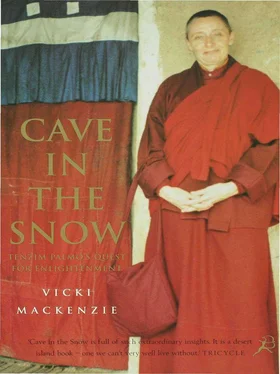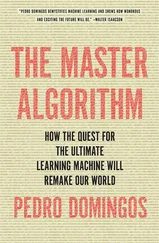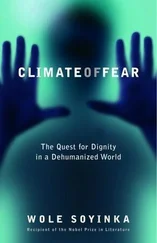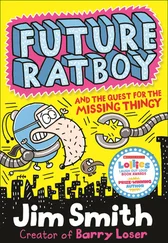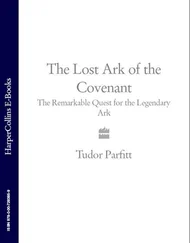To specifically Buddhist audiences she expands her theme, going into greater depth and at the same time revealing the extent of her own wisdom and scholarship. ‘Mindfulness can be interpreted in two ways,’ she says. ‘ “Concentration", which is narrow and laser-like, or “awareness” which is more panoramic. One could take as an example listening to music. If one is really listening to music it is as if one is absorbed into the music. As the poet T.S. Eliot put it, “Music heard so deeply that it is not heard at all, but you are the music while the music lasts.” That is concentration. But to know one is absorbed in the music is awareness. Do you see the difference? When we are aware, we are mindful not only of what we are doing but the feelings, the emotions that are arising, and what’s happening around us as well.
‘It’s so simple we miss it. We think it has to be something bigger, more spectacular. What do people think spiritual development is? It’s not lights and trumpets. It’s very simple. It’s right here and now. People have this idea that Enlightenment and realization is something in the distance – a very fantastic and magnificent happening which will transform everything once and for always. But it’s not like that at all. It’s something which is sometimes so simple you hardly see it. It’s right here in front of us, so close we don’t notice it. And it’s something which can happen at any moment. And the moment we see it, there it is. It’s been there all the time, but we’ve had our inner eye closed. When the moments of awareness all link up - then we become a Buddha.
’The Sanskrit word for mindfulness is “Smriti", in Pali it’s “Sati", and in Tibetan “Drenpa",’ she continues. ’Significantly, they all mean “to remember”. It’s what the Catholics call “being in a state of recollection”. And it’s extremely difficult. If we can be aware for a few minutes that’s already a lot. If mindfulness is synonymous with “remembering” it follows that the enemy of awareness is forgetfulness. We can be aware for a few short moments and then we forget. How do we remember to remember? That’s the issue. The problem is we have this tremendous inertia. We simply don’t have the habit of remembering.’
She searches for an analogy to illustrate her meaning. ‘At the moment it’s as though we’re looking through a pair of binoculars and the perspective is blurred. When we experience anything we do so through the filter of ideas, preconceptions, judgements. For example, when we meet somebody we don’t see them as they actually are. We see them in relationship to what we’re thinking about them – how much we like or dislike them, how they remind us of somebody else, what sort of qualities they have. We’re not experiencing them in themselves. Everything we perceive is like that – everything we see, eat, hear, touch. It’s immediately interpreted back to ourselves in conformity with our thoughts and experiences.
‘We might think, “So what?” It’s not important. But what happens is that we’re living several paces back from the experience itself and therefore we become more and more conditioned, more and more robotic. We become increasingly computer-like. Someone "pushes our buttons” as they so aptly put it and out comes the conditioned response.
‘What we have to do is bring everything into sharp focus, to see things as they truly are as if for the very first time - like a small baby looking at the murals in a shrine room, as the Tibetans say. The baby sees the colours and shapes without judgement, its mind is fresh. That’s the state of mind we have to bring into our everyday life. If we can learn to do that, without doing anything else, it will transform the situation automatically,’ she promises.
She goes on to give a comprehensive description of the various ways ‘ordinary’ people can begin to achieve Mindfulness. Once again the instructions are specific, and eminently practical. She tells people how to watch their breath, their bodies, their thoughts. The instructions are detailed, clear. At times her voice becomes animated, lyrical, taking on that ‘bubbly’ quality that she was known for in her youth when an idea excited her.
‘People have this idea that to become a spiritual person you have to become this cosmic blob, which is what we’re frightened of. But it’s not like that at all,’ she continues. ‘It doesn’t mean you no longer feel, that you’re emotionally flat. One still has one’s identity, one’s personality – it’s just that one no longer believes in it. When we meet the high lamas they’re the most vivid people possible. That’s because so many of the knots that we have in our minds and which keep us so inhibited have fallen away and the actual spontaneous nature of the mind can shine through. The Buddha’s mind is not a blank nothing - it’s filled with compassion, joy and humour. It’s wonderfully light. It’s also extremely sensitive and very deeply intelligent,’ she says and pauses to think of an example to amplify her meaning.
‘Awareness is like a surfboard. If you are a surfer you don’t want a quiet lake, you want the big wave. The bigger the wave, the more fun, right? Milarepa said, “The greater the disturbance, the greater the joy,’ because he was riding on top of it, skilful and balanced. From a spiritual point of view it’s not advantageous to be a rabbit. It’s better to be a tiger,’ she continues, switching metaphors. ‘Rabbits are very nice and cuddly but they don’t have much potential for breaking through. Tigers, on the other hand, are very wild but that pure energy, if used skilfully, is exactly what’s needed on the path. All the great saints were very passionate people. It’s just that they didn’t dissipate their passions into negative channels. They used them as fuel to send them to Enlightenment.’
And at these points she seems to come close to that greatest cave meditator of all, Milarepa, the founder of her lineage, whose experience lead him beyond dogma.
Accustomed long to meditating on the whispered chosen truths.
I have forgot all that is said in written and in printed books.
Accustomed long to application of each new experience to my own spiritual growth,
I have forgot all creeds and dogmas.
Accustomed long to know the meaning of the Wordless,
I have forgot the way to trace the roots of verbs, and source of words and phrases.
To more advanced congregations the talks get meatier and livelier, often spilling over into animated dialogues.
’There is the thought, and then there is the knowing of the thought. And the difference between being aware of the thought and just thinking is immense. It’s enormous … Normally we are so identified with our thoughts and emotions, that we are them. We are the happiness, we are the anger, we are the fear. We have to learn to step back and know our thoughts and emotions are just thoughts and emotions. They’re just mental states. They’re not solid, they’re transparent,’ she said, before delivering the bottom line. ‘One has to know that and then not identify with the knower. One has to know that the knower is not somebody.’
There is a silence while the listeners digest the information.
Tenzin Palmo has ventured out on to profoundly philosophical ground. A voice from the floor speaks out: ’ “The knower is also not somebody,"’ the voice repeats slowly, thinking it over.
’That’s difficult!’
‘Yes! But that was the Buddha’s great insight,’ Tenzin Palmo comes back in a voice quiet with respect.
‘You think you’ve got it when you understand that you are not the thought or feeling – but to go further and know you are not the knower … that brings you to the question: “Who am I?",’ continues the questioner.
Читать дальше
